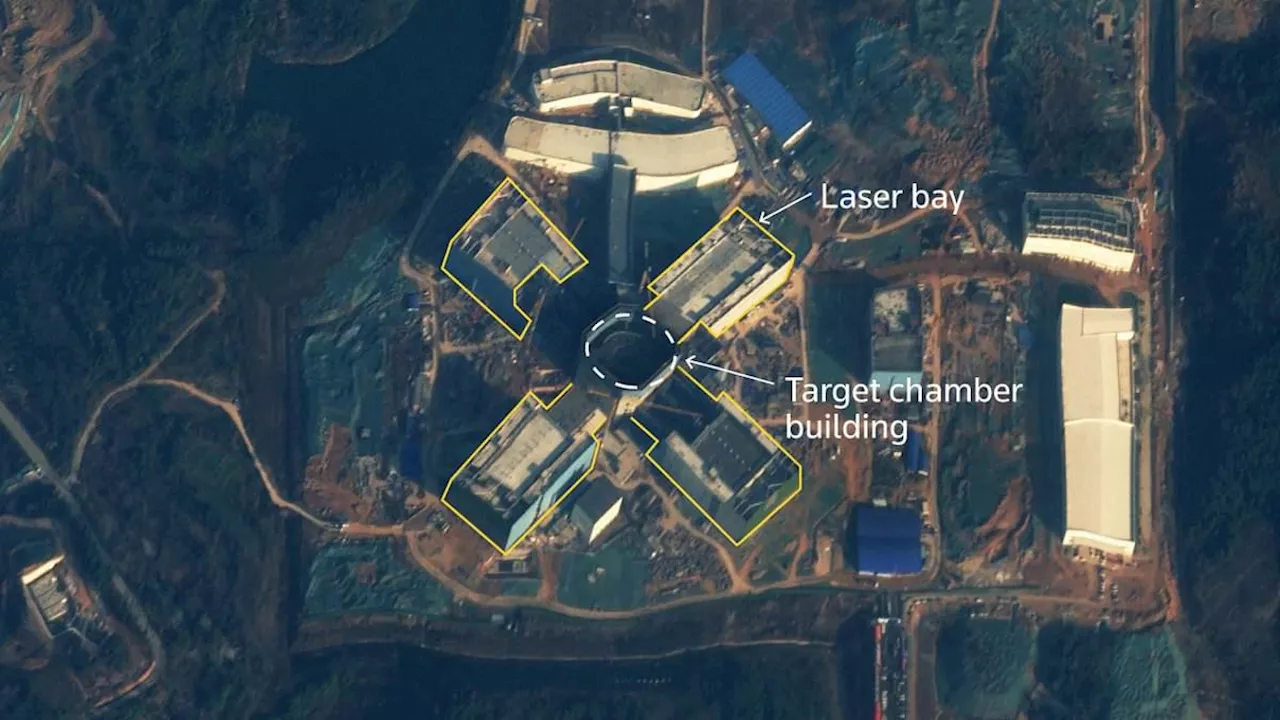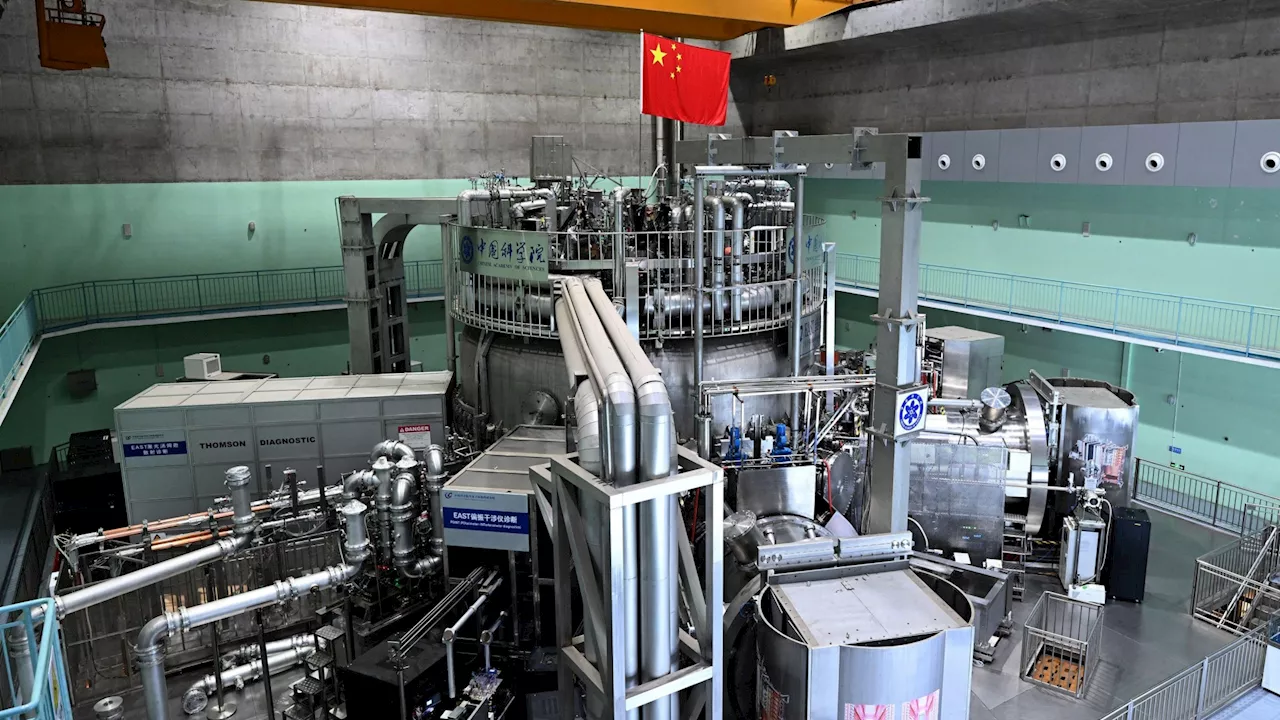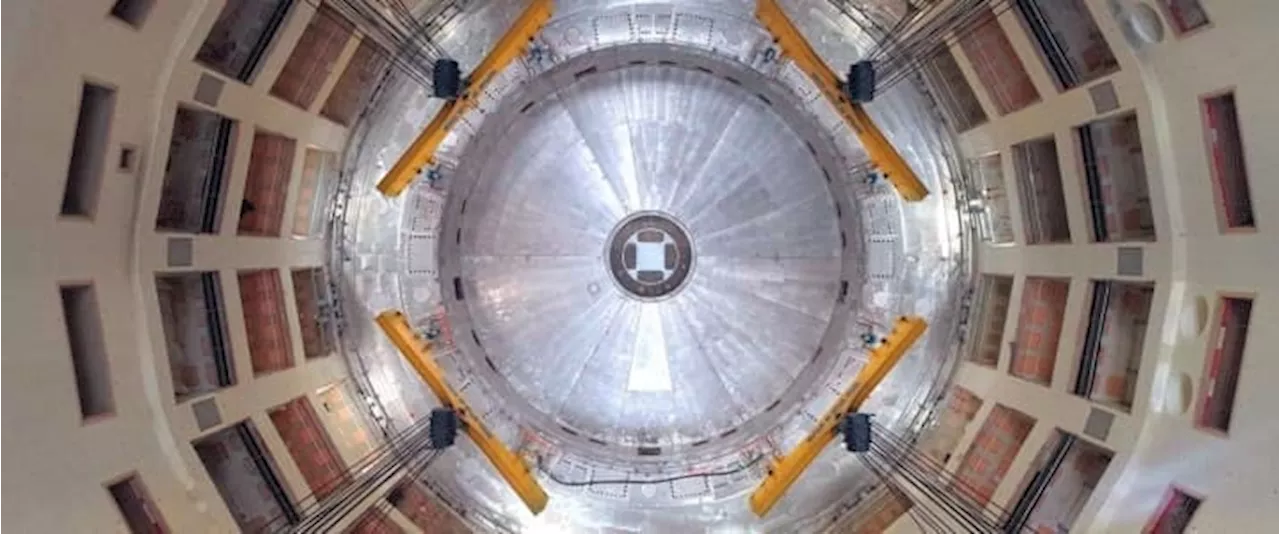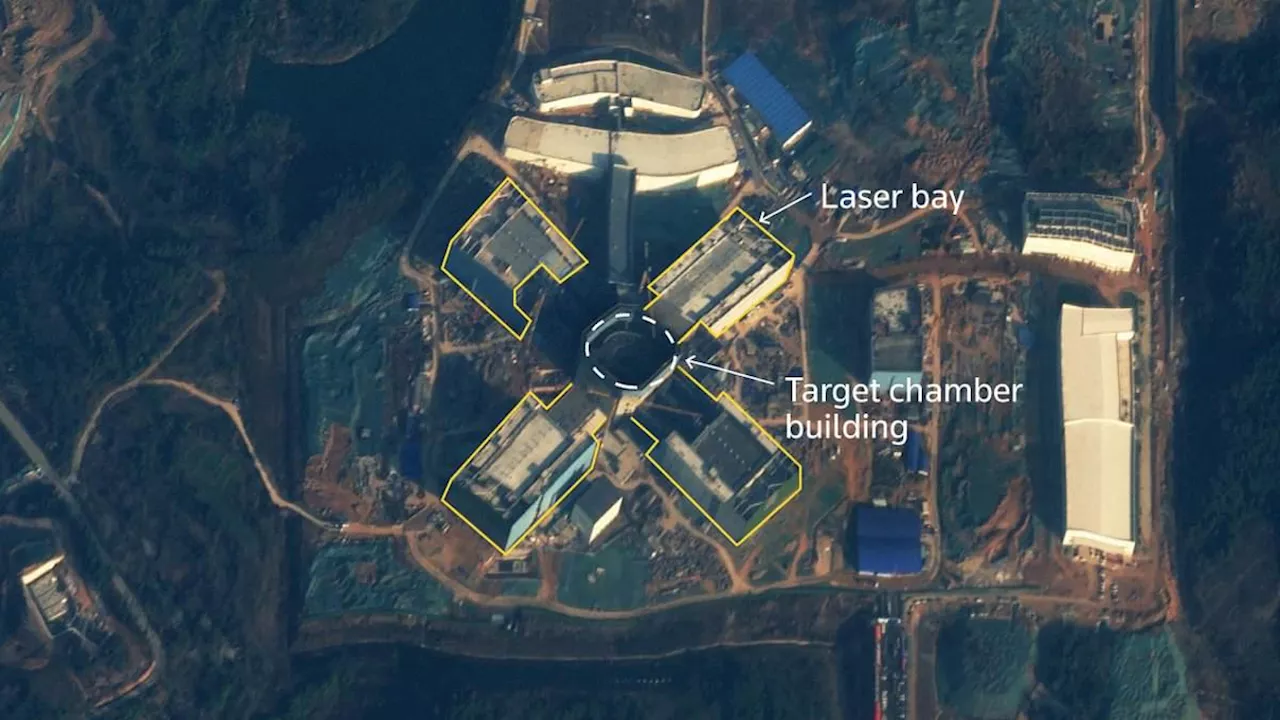China has commenced construction of a vast new fusion research center, raising global concerns about its potential applications in both clean energy production and nuclear weapons development.
Satellite imagery has revealed China's construction of a massive new fusion research center, sparking international concern over its potential applications in both energy production and nuclear weapons development. Located in Mianyang, Sichuan province, the facility has been analyzed by experts who have identified its design, featuring four extensive laser bays converging on a central experimental chamber.
This design bears a striking resemblance to the US National Ignition Facility (NIF) in California, which made headlines last year for achieving a breakthrough in nuclear fusion. However, the Chinese experiment bay appears to be approximately 50% larger than its American counterpart, suggesting that China's ambitions may surpass even those of the US in the race for fusion technology.The facility's location in Mianyang is particularly significant as the region is already known as a hub for China's nuclear and defense research. The city is home to the China Academy of Engineering Physics (CAEP), the nation's premier nuclear weapons research institute. This connection has fueled speculation that the new facility is not solely focused on energy research but could also serve dual purposes, including enhancing the country's nuclear arsenal. Experts highlight that such facilities enable countries to simulate the conditions of nuclear explosions, thereby refining warhead designs without the need for actual detonations. This capability is especially valuable for nations adhering to the Comprehensive Nuclear Test Ban Treaty, as it allows for the maintenance and advancement of nuclear arsenals without violating international agreements.China's investment in fusion research is not unprecedented. The country has been developing laser technologies for inertial confinement fusion (ICF) since the late 20th century. Currently, there are three laser facilities routinely conducting physics experiments: the SG-II laser facility in Shanghai, the SG-III prototype, and the SG-III laser facility in Mianyang. These facilities have been instrumental in advancing China's understanding of fusion processes and laser technology. In recent years, China's fusion research has garnered international attention. The Experimental Advanced Superconducting Tokamak (EAST), often referred to as the 'artificial sun,' achieved a significant milestone by sustaining plasma at temperatures exceeding 50 million Kelvins for 102 seconds. This accomplishment marked a critical advancement in demonstrating the feasibility of sustained nuclear fusion reactions. The revelation of the Mianyang facility comes at a time when global powers are increasingly focused on fusion research. The United States, for instance, announced a breakthrough in nuclear fusion at the NIF, achieving a reaction that produced more energy than was used to ignite it. This milestone was hailed as a significant step toward realizing the potential of fusion as a near-limitless and clean energy source
FUSION RESEARCH CHINA NUCLEAR WEAPONS ENERGY PRODUCTION INTERNATIONAL RELATIONS LASER TECHNOLOGY
United Kingdom Latest News, United Kingdom Headlines
Similar News:You can also read news stories similar to this one that we have collected from other news sources.
 China's New Fusion Research Center Sparks Nuclear ConcernsSatellite images reveal a sprawling new fusion research center in China, raising international alarm about its potential applications in both energy production and nuclear weapons development. The facility resembles the US National Ignition Facility and its size suggests ambitious goals.
China's New Fusion Research Center Sparks Nuclear ConcernsSatellite images reveal a sprawling new fusion research center in China, raising international alarm about its potential applications in both energy production and nuclear weapons development. The facility resembles the US National Ignition Facility and its size suggests ambitious goals.
Read more »
 China Sets New Record for Sustained Fusion Plasma OperationHefei Institutes of Physical Science in China achieved a new world record for maintaining a steady-state high-confinement plasma operation for almost 18 minutes, a significant milestone in fusion energy research.
China Sets New Record for Sustained Fusion Plasma OperationHefei Institutes of Physical Science in China achieved a new world record for maintaining a steady-state high-confinement plasma operation for almost 18 minutes, a significant milestone in fusion energy research.
Read more »
 Nuclear fusion breakthrough: China's 'artificial sun' reactor sets a new world record by generating...Fusion is a sustainable energy source inspired by the sun. Work has begun to assemble giant components to build an experimental nuclear fusion reactor in France that is expected to start up in 2035.
Nuclear fusion breakthrough: China's 'artificial sun' reactor sets a new world record by generating...Fusion is a sustainable energy source inspired by the sun. Work has begun to assemble giant components to build an experimental nuclear fusion reactor in France that is expected to start up in 2035.
Read more »
 China's Massive New Fusion Site: Clean Energy or Nuclear Threat?China is building a large-scale fusion research facility in Mianyang, potentially pushing both clean energy and nuclear weapons development.
China's Massive New Fusion Site: Clean Energy or Nuclear Threat?China is building a large-scale fusion research facility in Mianyang, potentially pushing both clean energy and nuclear weapons development.
Read more »
 Chinese Scientists Achieve Breakthrough in Nuclear Fusion ResearchScientists at the Experimental Advanced Superconducting Tokamak (EAST) facility in China have made significant progress in nuclear fusion research, achieving plasma temperatures hotter than the sun. This breakthrough brings the possibility of an unlimited source of energy closer to reality. While still facing challenges in building a sustained fusion reactor, the achievement marks a major step forward in harnessing the power of the 'artificial sun'.
Chinese Scientists Achieve Breakthrough in Nuclear Fusion ResearchScientists at the Experimental Advanced Superconducting Tokamak (EAST) facility in China have made significant progress in nuclear fusion research, achieving plasma temperatures hotter than the sun. This breakthrough brings the possibility of an unlimited source of energy closer to reality. While still facing challenges in building a sustained fusion reactor, the achievement marks a major step forward in harnessing the power of the 'artificial sun'.
Read more »
 China Breaks Nuclear Fusion Record, AgainChinese researchers set a new record by sustaining a nuclear fusion reaction at 100 million degrees Celsius for 1,066 seconds.
China Breaks Nuclear Fusion Record, AgainChinese researchers set a new record by sustaining a nuclear fusion reaction at 100 million degrees Celsius for 1,066 seconds.
Read more »
